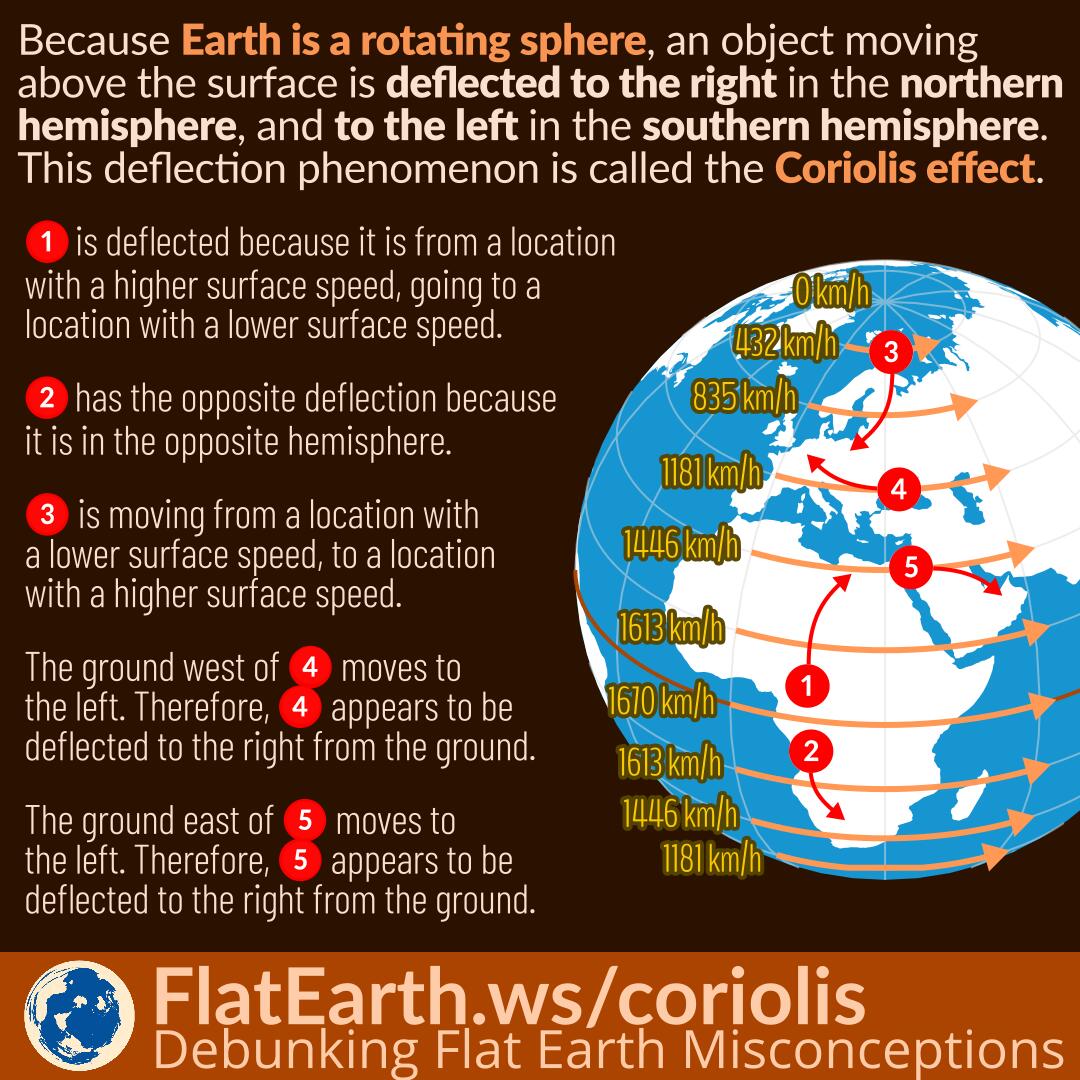The Coriolis force is a force that acts on objects that are in motion within a rotating frame of reference. Because the Earth is a rotating sphere, an object traveling unattached to Earth’s surface is affected by the Coriolis force, depending on its speed and direction, as well as its latitude on Earth’s surface.
The rotating motion of the Earth causes the different parts of Earth’s surface to have different linear speeds, depending on its distance from the Earth’s rotational axis. An object moving from a location to another with a different linear speed will be affected by the Coriolis force because the motion of the object is now being observed from another location with a different linear speed/direction relative to Earth’s rotational axis.
Due to the Coriolis force, in the northern hemisphere, an object moving to the north will be deflected to the right because it is moving to a location with a slower linear speed from Earth’s rotation. An object traveling to the south will also be deflected to its right because it is moving to a location with a faster linear speed.
Because Earth’s rotation, In the northern hemisphere, the surface west of the observer is moving to the observer’s left. The same thing happens to the surface east of the observer. As a result, from the standpoint of an observer on Earth’s surface, an object thrown westward will be deflected to the right, and the same thing happens to an object thrown eastward.
In the southern hemisphere, all the above also happens, but with the reversed direction.
Sometimes the Coriolis force is significant enough and needs to be accounted for in cases like long-range shooting, artillery firing, wind motion, etc. The phenomenon of the Coriolis effect can only occur if the Earth is a rotating sphere. It is impossible to happen on a flat, stationary Earth.
References
- Coriolis force – Wikipedia


